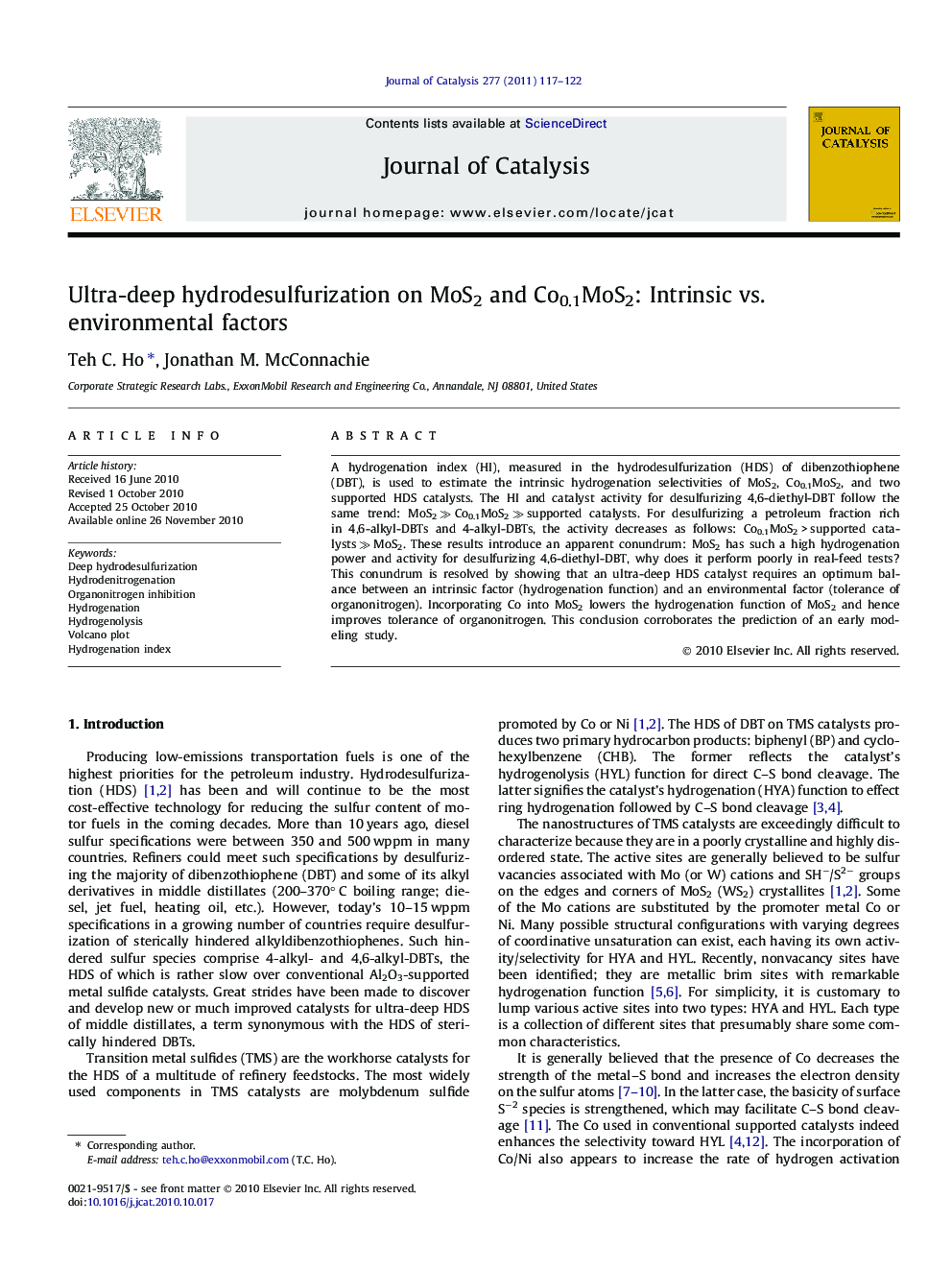| Article ID | Journal | Published Year | Pages | File Type |
|---|---|---|---|---|
| 61846 | Journal of Catalysis | 2011 | 6 Pages |
A hydrogenation index (HI), measured in the hydrodesulfurization (HDS) of dibenzothiophene (DBT), is used to estimate the intrinsic hydrogenation selectivities of MoS2, Co0.1MoS2, and two supported HDS catalysts. The HI and catalyst activity for desulfurizing 4,6-diethyl-DBT follow the same trend: MoS2 ≫ Co0.1MoS2 ≫ supported catalysts. For desulfurizing a petroleum fraction rich in 4,6-alkyl-DBTs and 4-alkyl-DBTs, the activity decreases as follows: Co0.1MoS2 > supported catalysts ≫ MoS2. These results introduce an apparent conundrum: MoS2 has such a high hydrogenation power and activity for desulfurizing 4,6-diethyl-DBT, why does it perform poorly in real-feed tests? This conundrum is resolved by showing that an ultra-deep HDS catalyst requires an optimum balance between an intrinsic factor (hydrogenation function) and an environmental factor (tolerance of organonitrogen). Incorporating Co into MoS2 lowers the hydrogenation function of MoS2 and hence improves tolerance of organonitrogen. This conclusion corroborates the prediction of an early modeling study.
Graphical abstractAn ultra-deep diesel hydrodesulfurization catalyst such as the unsupported Co0.1MoS2 requires a balance between the hydrogenation function and resilience to organonitrogen inhibition. The Al2O3-supported CozMo catalyst (z > 0.3) is a commercial hydrodesulfurization catalyst.Figure optionsDownload full-size imageDownload high-quality image (104 K)Download as PowerPoint slide
